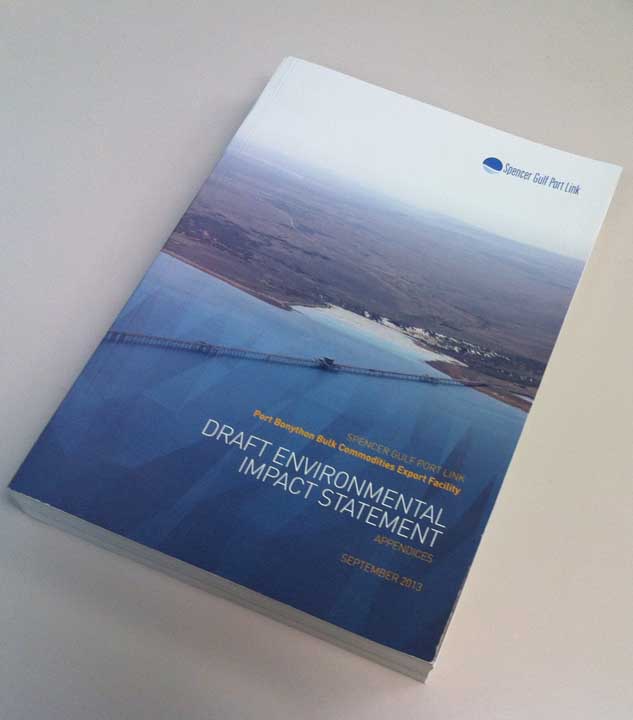Economic analysis carried out for the proposed Port Bonython Bulk Commodities Export Facility’s Draft Environmental Impact Statement (EIS) predicts that the project would contribute an additional $10.2 billion to the state’s economy in the next 30 years.
This economic activity is also predicted to create up to 270 jobs in the local economy and up to 630 jobs in the broader South Australian market during construction of the project. During the project’s operation it is expected that around 40 local people will be employed to run the facility with a further 790 jobs created in the South Australian market as a result of flow on economic benefits from the project.
Spencer Gulf Port Link’s Stewart Lammin, General Manager of Flinders Ports said the proposed export facility is key to unlocking the state’s multi-billion dollar iron-ore industry.
“We’ve seen other states reap the economic benefits of the mining-boom, it’s now South Australia’s turn,” said Mr Lammin.
“This state needs an efficient, cost-effective route to the global iron-ore market that can be utilised by any mining company, large or small.”
“The completion of the project’s draft Environmental Impact Statement marks a major milestone for the proposal.”
The South Australian Government’s Development Assessment Commission (DAC) today released the EIS to the public for comment.
“While the economic benefits speak for themselves, we understand that the potential environmental and social impacts also need to be carefully understood and managed,” said Mr Lammin.
“We’re confident that the Draft EIS provides a comprehensive assessment of the potential environmental, social and economic impacts and benefits associated with the proposal.”
The Draft EIS has been prepared by an expert team of consultants led by international environmental, planning and engineering consultancy Arup through its Adelaide office.
“The Draft EIS shows that the project has been carefully designed to avoid a number of potential environmental and social impacts,” said Mr Lammin.
“The Draft EIS demonstrates that through the application of appropriate mitigation measures, detailed design considerations, best practice construction approaches and robust operational management and monitoring strategies, the identified risks to the environment can be successfully managed.”
The Draft EIS has been prepared to address DAC’s EIS Guidelines which set out a comprehensive list of topics and issues that needed to be studied in the EIS.
“We’ve also met with various stakeholders during the preparation of the EIS and have worked hard to answer their questions about the project in the EIS,” said Mr Lammin.
“People now have the opportunity to review the draft EIS and provide formal comments to DAC about the Draft EIS.”
The Draft EIS is available both online (www.spencergulfportlink.com.au or www.sa.gov.au) and in hard copy at the Whyalla Library, Whyalla Council Chambers, the South Australian State Library and the Department of Planning, Transport and Infrastructure in Adelaide.
The EIS public comment period runs until Monday 18th November 2013.
